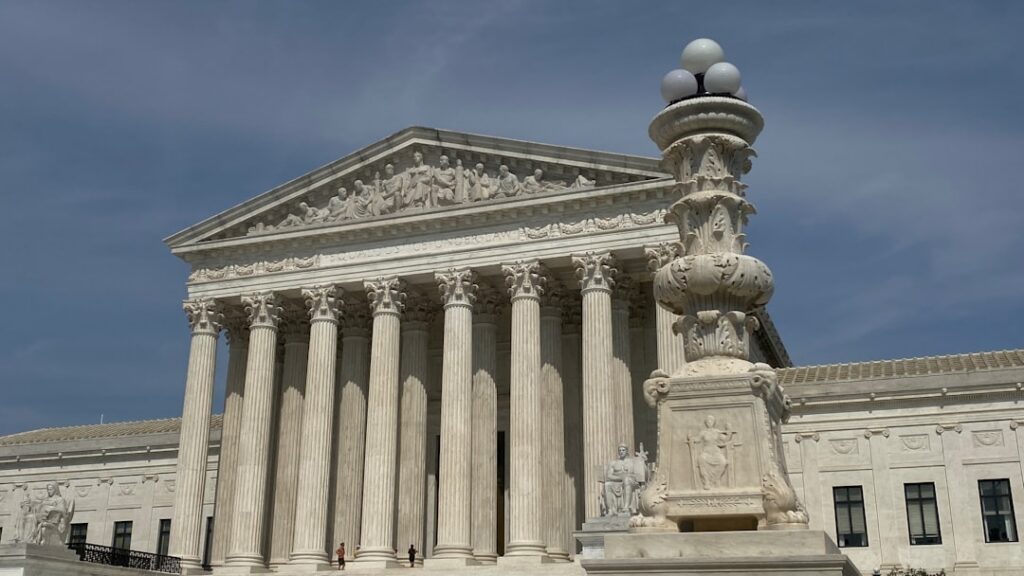Supreme Court Extends Temporary Pause on $4 Billion in SNAP Payments
The Supreme Court’s decision to extend the temporary pause on $4 billion in Supplemental Nutrition Assistance Program (SNAP) payments has left many Americans in a state of uncertainty. With the government shutdown looming, Congress is working feverishly to reach an agreement that includes full SNAP funding through September. This development could mean that the Supreme Court may not have to issue a ruling later, alleviating some pressure on the government and those who rely on these essential benefits.
Quick Takeaways
- The Supreme Court has temporarily paused SNAP payments amounting to $4 billion.
- A Congressional deal aims to fund SNAP through September.
- This agreement may prevent the need for a Supreme Court ruling.
- The situation continues to evolve as lawmakers negotiate.
- Millions of Americans depend on SNAP for food assistance.
- The implications of this pause could affect various demographics.
- Advocates are urging swift action to restore funding.
- Public sentiment is mixed, with some supporting the pause for broader reforms.
Understanding SNAP and Its Importance
SNAP, formerly known as food stamps, plays a crucial role in ensuring food security for millions of Americans. It provides financial assistance to eligible low-income individuals and families, helping them purchase nutritious food. With rising costs of living, the importance of SNAP funding cannot be overstated.
The Supreme Court’s Role
The Supreme Court’s involvement in the SNAP funding debate highlights the intersection of law, government operations, and public welfare. Their decision to pause funding comes as lawmakers are caught in a legislative tug-of-war.
Congressional Negotiations
As Congress negotiates a deal to end the government shutdown, the implications for SNAP funding are significant. A bipartisan effort is essential for reaching a consensus that will ensure the continuation of this vital program.
Potential Effects on Recipients
The temporary pause on SNAP payments could have devastating effects on millions of recipients who rely on this assistance for their daily nutrition. Food insecurity is a pressing issue, and the delay in funding only exacerbates the challenges faced by these individuals and families.
Public Response and Advocacy
Advocates for food security have been vocal in their response to the Supreme Court’s decision. Many are calling for immediate action to restore SNAP funding and ensure that no American goes hungry.
Historical Context of SNAP Funding
Understanding the history of SNAP funding is crucial to grasping the current situation. The program has seen various reforms and funding challenges over the years, often tied to broader political agendas.
The Legislative Process Explained
The legislative process can be complex and slow, especially when multiple parties are involved. Understanding how SNAP funding fits into the larger budget negotiations is key to predicting future outcomes.
Impact of the Government Shutdown
The government shutdown directly affects SNAP funding, as it relies on federal appropriations. The current standoff in Congress has raised concerns about the future of the program.
Looking Ahead: What Comes Next?
As lawmakers continue their negotiations, the future of SNAP funding hangs in the balance. A resolution is necessary to avoid further disruptions in assistance for millions of Americans.
Related Resources
- USDA SNAP Overview
- Center on Budget and Policy Priorities on SNAP
- Feeding America Food Insecurity Research
- Congress.gov for Legislative Updates
Frequently Asked Questions
What is SNAP?
SNAP stands for the Supplemental Nutrition Assistance Program, providing food purchasing assistance to low-income individuals and families.
Why did the Supreme Court pause SNAP payments?
The Supreme Court extended the pause due to ongoing negotiations in Congress regarding funding.
Who is affected by the SNAP funding pause?
Millions of low-income Americans who rely on SNAP for food assistance are affected by this pause.
What is the current status of the Congressional negotiations?
Negotiations are ongoing, with a potential agreement to fund SNAP through September.
How can I support SNAP funding?
You can support SNAP funding by advocating for policies that protect and enhance the program and contacting your local representatives.
What happens if SNAP funding is not restored?
If funding is not restored, many individuals and families may face increased food insecurity.
Are there alternatives to SNAP?
While there are other food assistance programs, SNAP is one of the largest and most vital sources of support.
Conclusion
The Supreme Court’s extension of the temporary pause on SNAP payments has significant implications for millions of Americans. As Congress works to negotiate a deal to fund SNAP through September, the stakes could not be higher. The public response has been one of concern and urgency, with advocates pushing for immediate action to restore funding and ensure that food security remains a priority. As the situation evolves, it is essential for lawmakers to recognize the importance of SNAP and the impact it has on individuals and families across the nation. The future of this vital program rests in the hands of those who have the power to enact change, and the urgency of the matter cannot be overstated. It is crucial that we remain informed and engaged, advocating for the vulnerable populations that SNAP serves.
Photo by Brad Weaver on Unsplash

